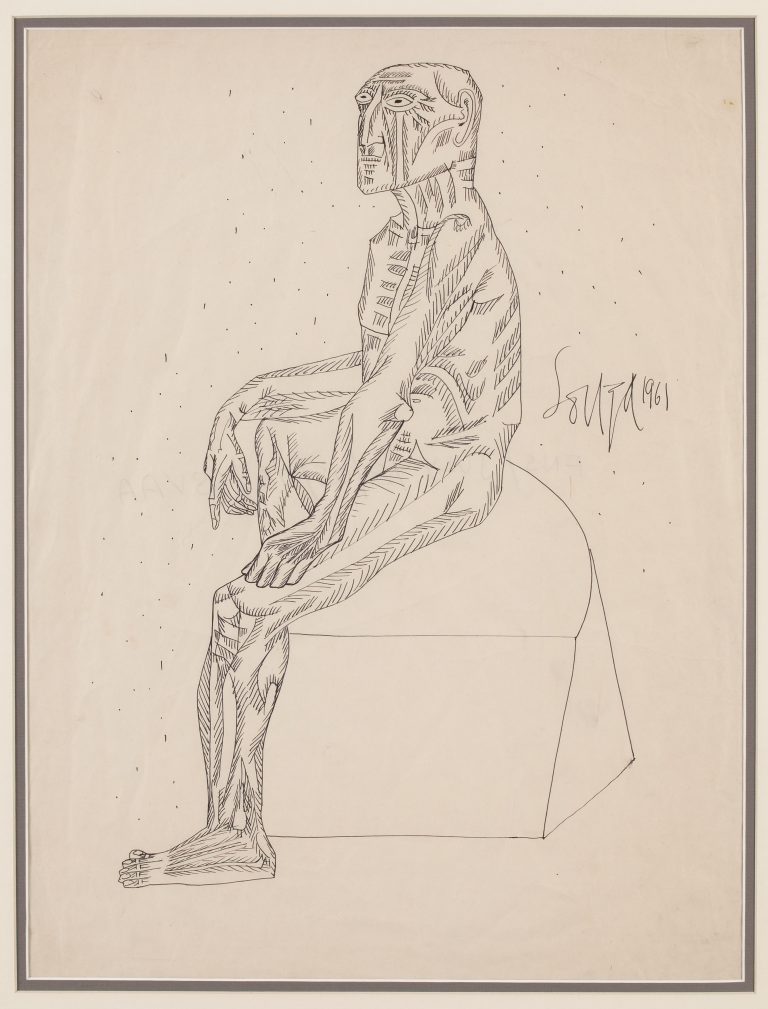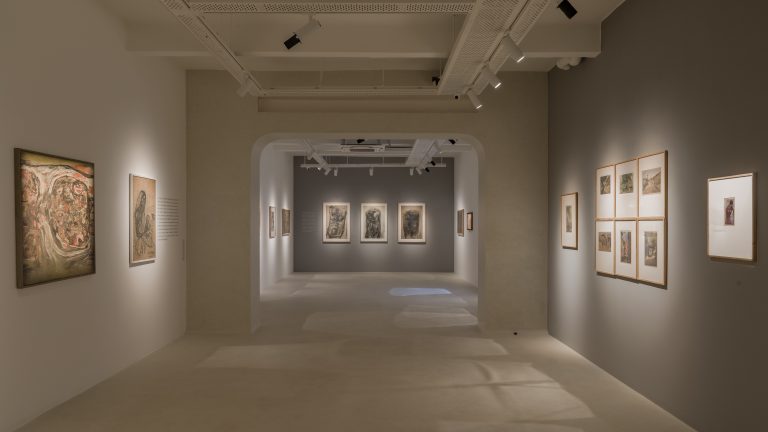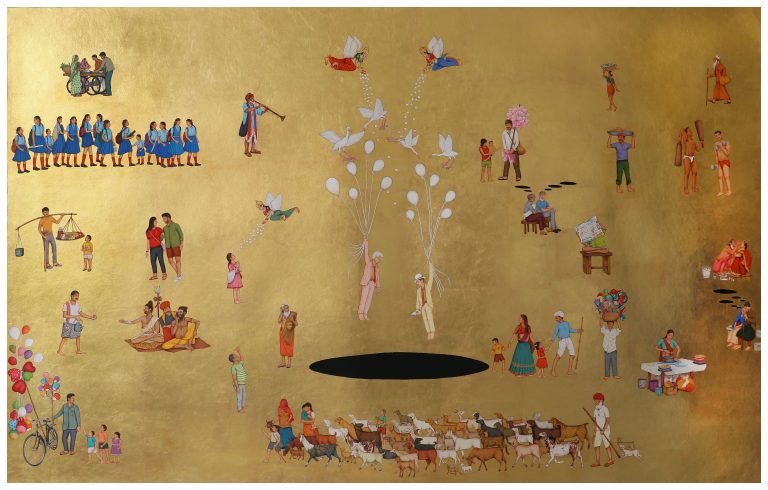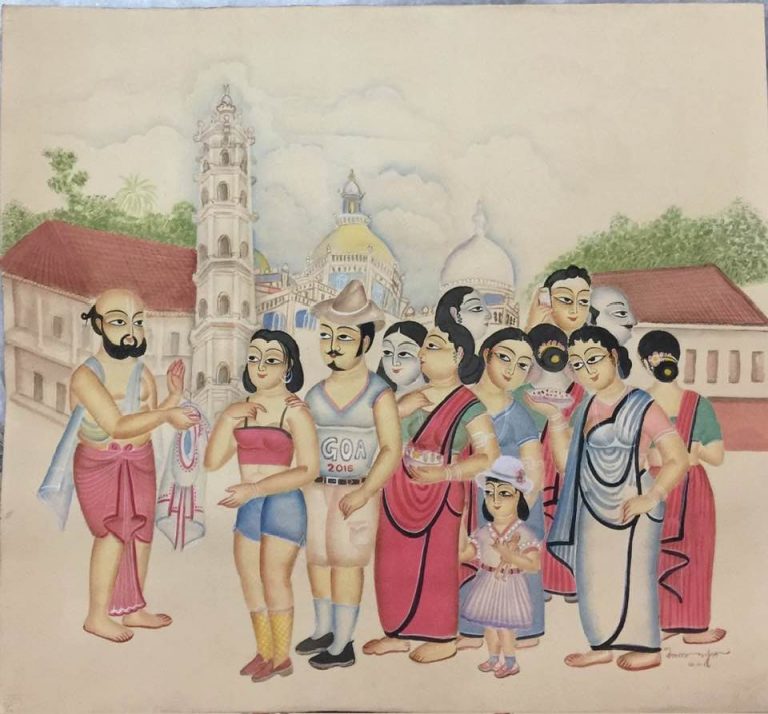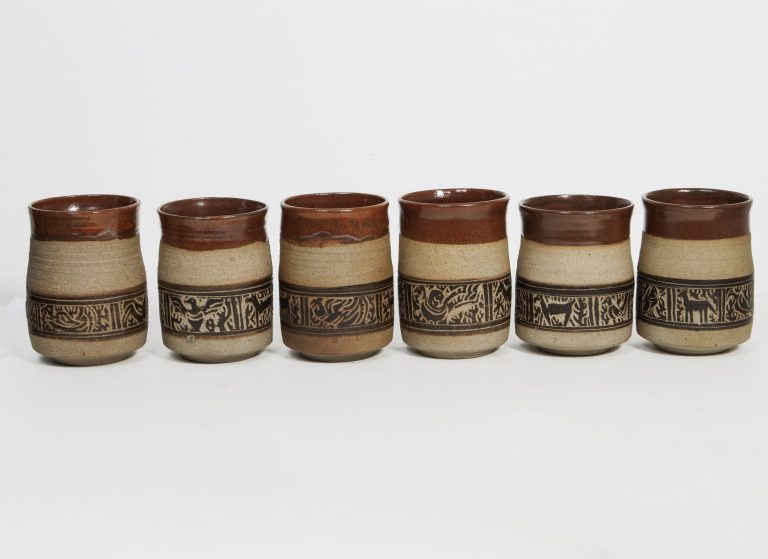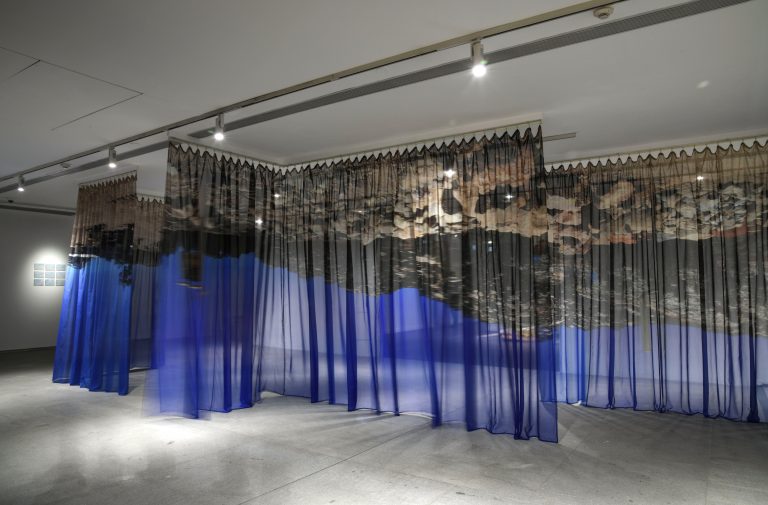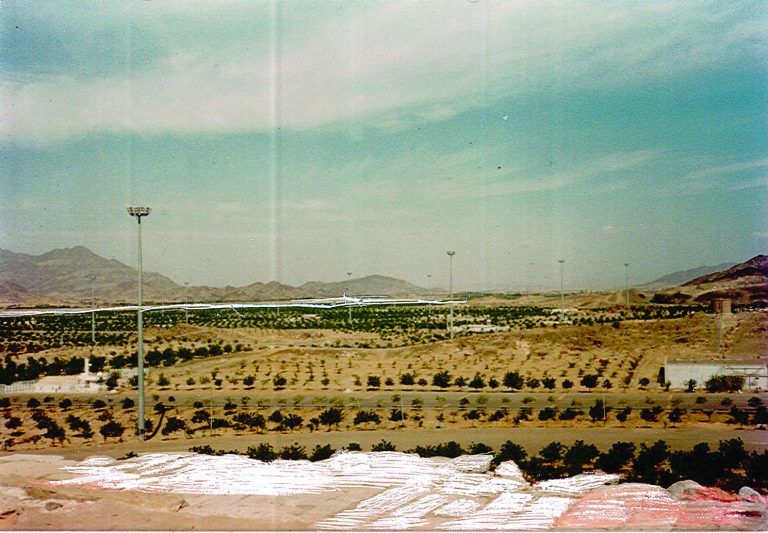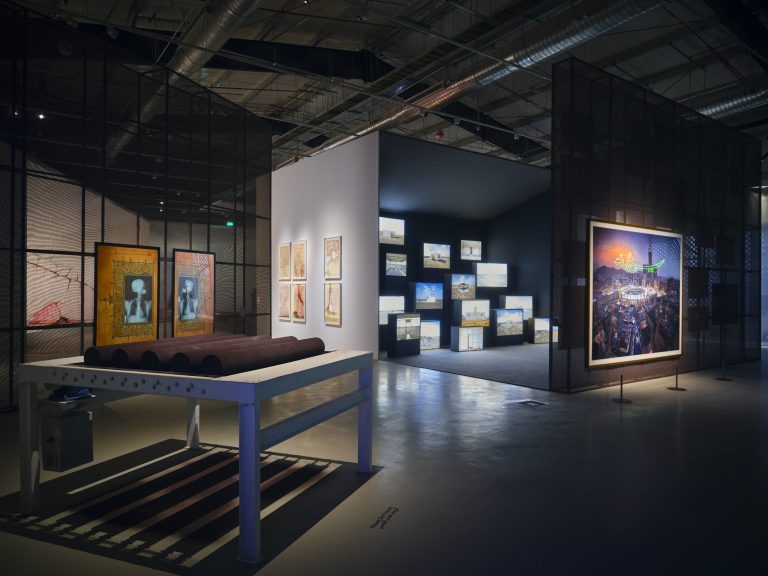Sudhir Patwardhan
Fragile worlds
Ravikumar Kashi’s ‘Fragile Worlds’ at the Museum of Art and Photography, Bengaluru, evokes the permeability of form, memory, and meaning. Through delicate, net-like sculptures and poetic explorations of language, the exhibition invites viewers into a tactile, immersive meditation on fragility, interconnectedness, and the porous edges of self and society.
Read MoreThe Archetypal Artist, Francis Newton Souza
This review by Dr Alka Pande explores 'F.N. Souza: The Archetypal Artist' by Janeita Singh (Niyogi Books), a bold and interdisciplinary examination of one of India’s most controversial modernists. Blending Jungian psychoanalysis, feminist literary theory, and cross-cultural philosophy, Singh offers a fresh, intimate lens into Souza’s work—unpacking themes of sexuality, shadow, and modernity with remarkable clarity and conviction. A compelling contribution to postcolonial readings of Indian art.
Read MoreVisceral Realities: Experiencing the Works of Jogen Chowdhury
This review by Dr. Aranya Bhowmik explores In Celebration: Jogen Chowdhury at Art Exposure Gallery, Kolkata. Curated by Soumik Nandy Majumdar, the exhibition traces Chowdhury’s evolving visual language—spanning refugee memories, surreal dreamscapes, and politically charged figures—revealing a deeply personal modernism marked by psychological depth, empathy, and cultural rootedness.
Read MoreThe Posthuman In Heaven (And That Other Place)
A Review of Waswo X Waswo's show Heaven (And That Other Place), held during 10 October - 17 November, 2024 at GALERIE ISA, Mumbai.
Read MoreKalighat Painting and Kalam Patua: Contemporary Chronicler
Kalam Patua is considered to be a phenomenon to understand the response of a traditional folk visual artist (the patua or the maker of the pata) to the non-academic and popular art practices of urban Kolkata, the Kalighat patachitra. Hailing from the Murshidabad district of Bengal, Kalam Patua is said to have reinvented Kalighat painting to create his own visual narratives and stabilise his rhetoric, style and technique. Patua started as an apprentice in his family of idol-makers in Murshidabad, and learnt patachitra painting which was the hereditary practice of his extended family spread in the two districts of Murshidabad and Birbhum.
Read MoreFrom the Ghor to the Gallery: Liberating the Feminine Realm in Indian Art
Review Of Spaces of Their Own: Women artists in early 20th century India, Curated by Aparna Roy Baliga and Debdutta Gupta, September 19 - October 15, 2024, Akar Prakar, Kolkata.
Read MoreThe Elemental You
A special feature of the show were the profound texts that accompanied some of the works. That was another point of convergence for the three participating artists—all of them are remarkable writers, in the words of the curator, who has not shied away from sharing their creative output in the written form as well. The show pushed the boundary of viewing art through our traditionally calibrated lenses and, in doing so, put KNMA in a different league of nurturing Indian art (needless to say, it is already in a different league altogether). With an overwhelming majority of Indians consuming and creating art through conventional tropes, shows such as ‘The Elemental You’ awaken us to the limitless possibilities that we ignore for the sake of convenience.
Read MoreEphemeral Visages
Ayesha Sultana feeds off her environment-generating processes that articulate her vision. Her need to not over-narrativize her work is compelling, and sometimes unsettling, as one finds various access points that could point to the potential underlying genesis; however, she is keen to empower the predicaments one offers in favour of her practice.
Read MoreArt of the Kingdom: Poetic Illumination – To Reclaim and Resurge Cultural History
Without losing sight on a fine balance between a tactile approach of tangible art and an aesthetic of moving images in video arts, Wechsler remaps the routes of cultural history and identity in its tangible form. In other words, through immersive installations, multimedia storytelling and archival interventions, the exhibition challenges viewers to reimagine cultural history not as a static relic, but a site of perpetual reinterpretation. In weaving together the threads of identity and belonging, within the curatorial lens of memory Art of the Kingdom: Poetic Illumination emerges as a reflective site of cultural reclamation and epistemic resurgence.
Read More







